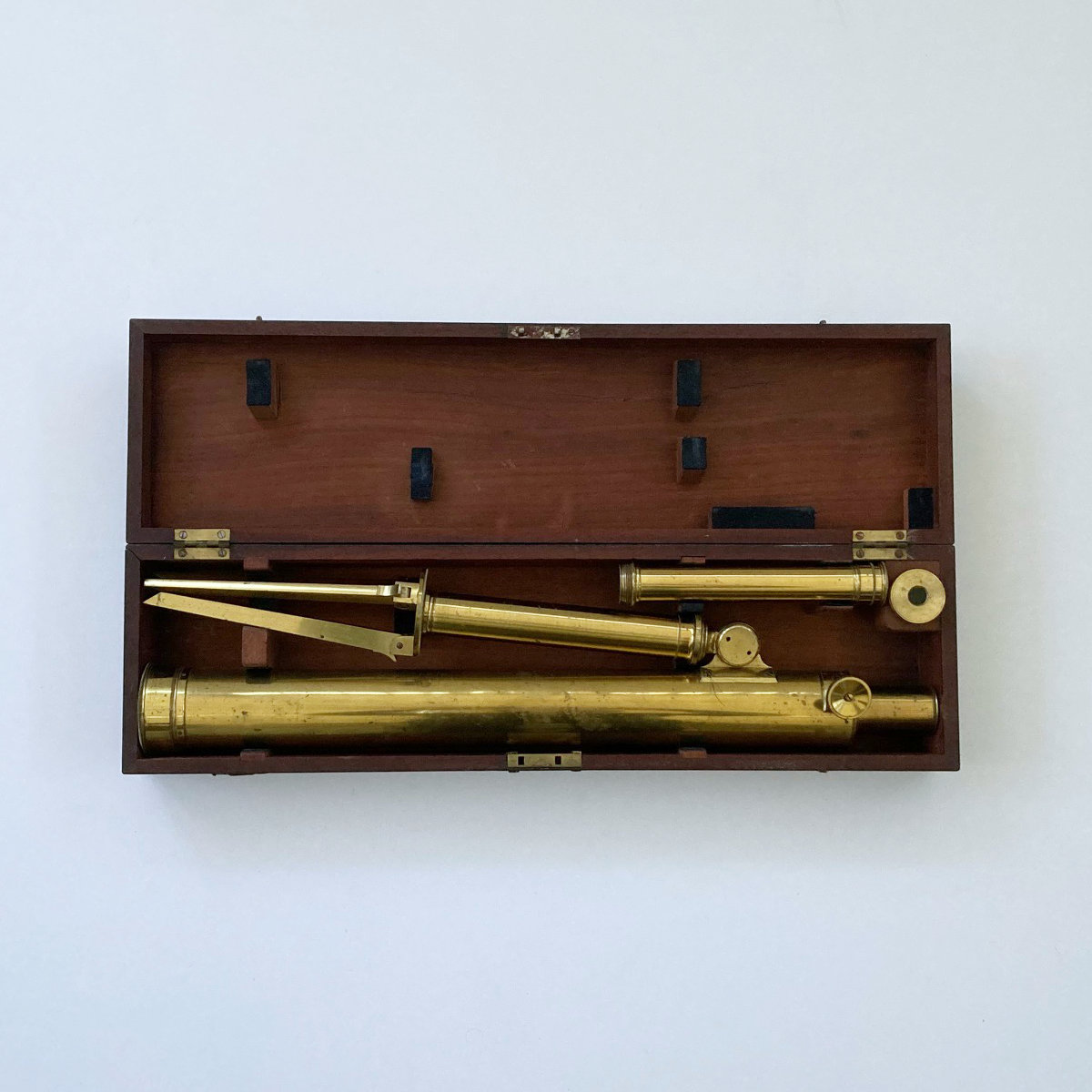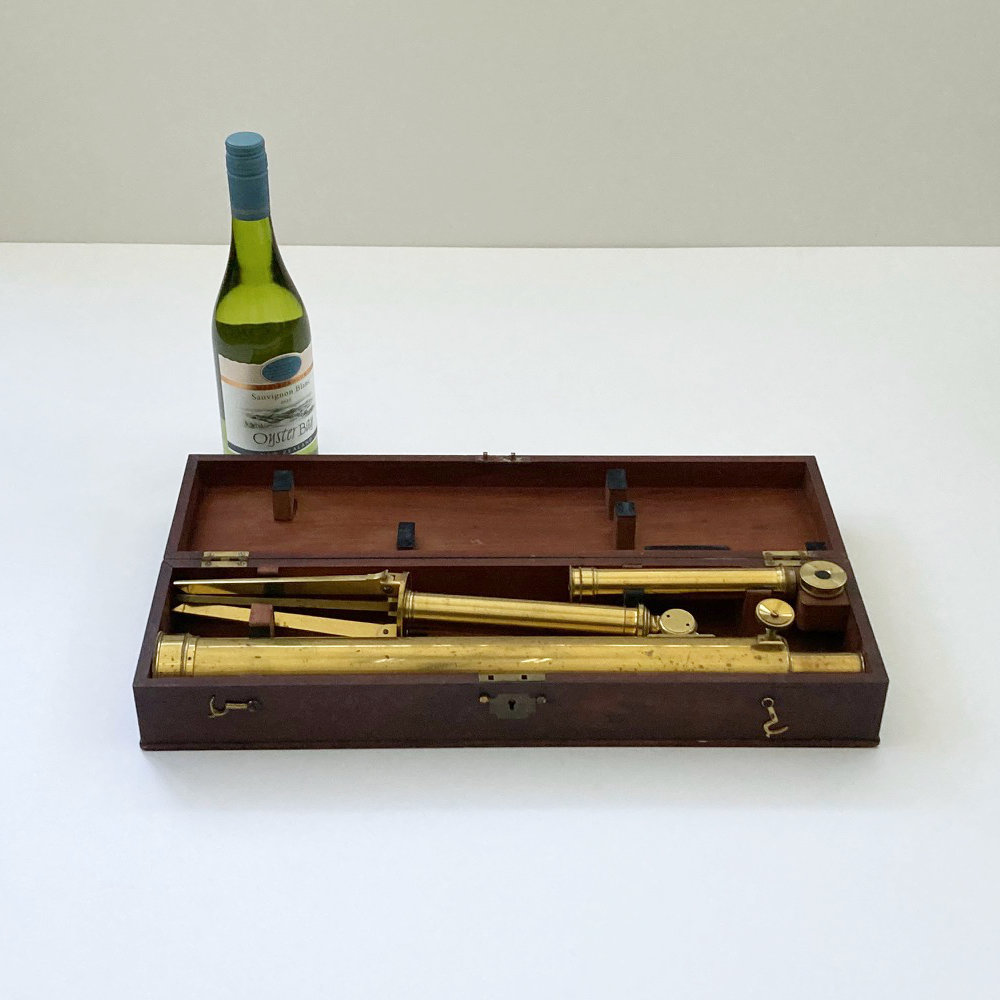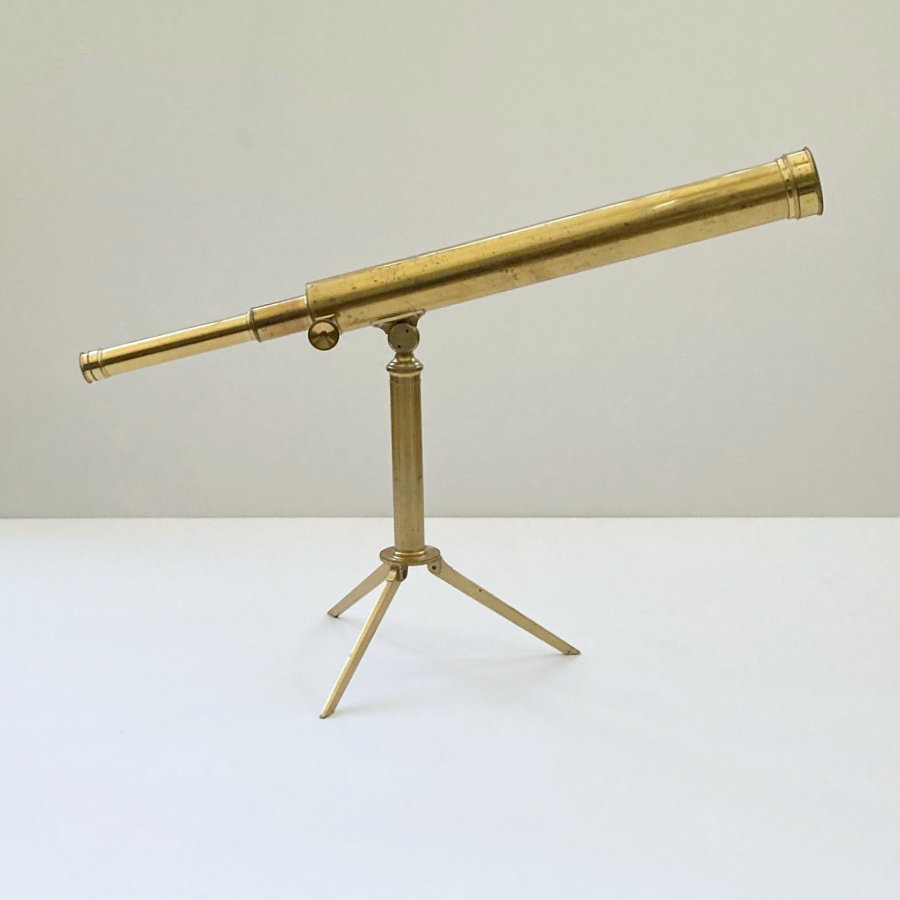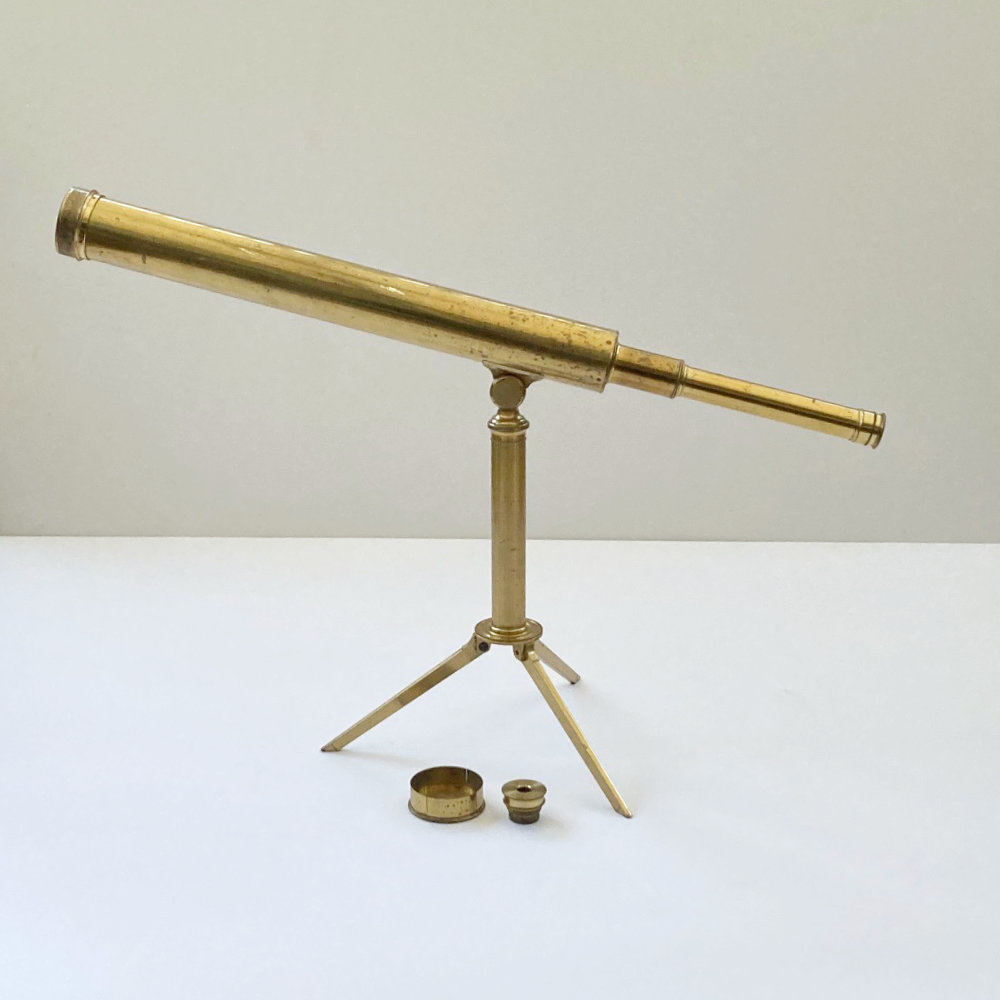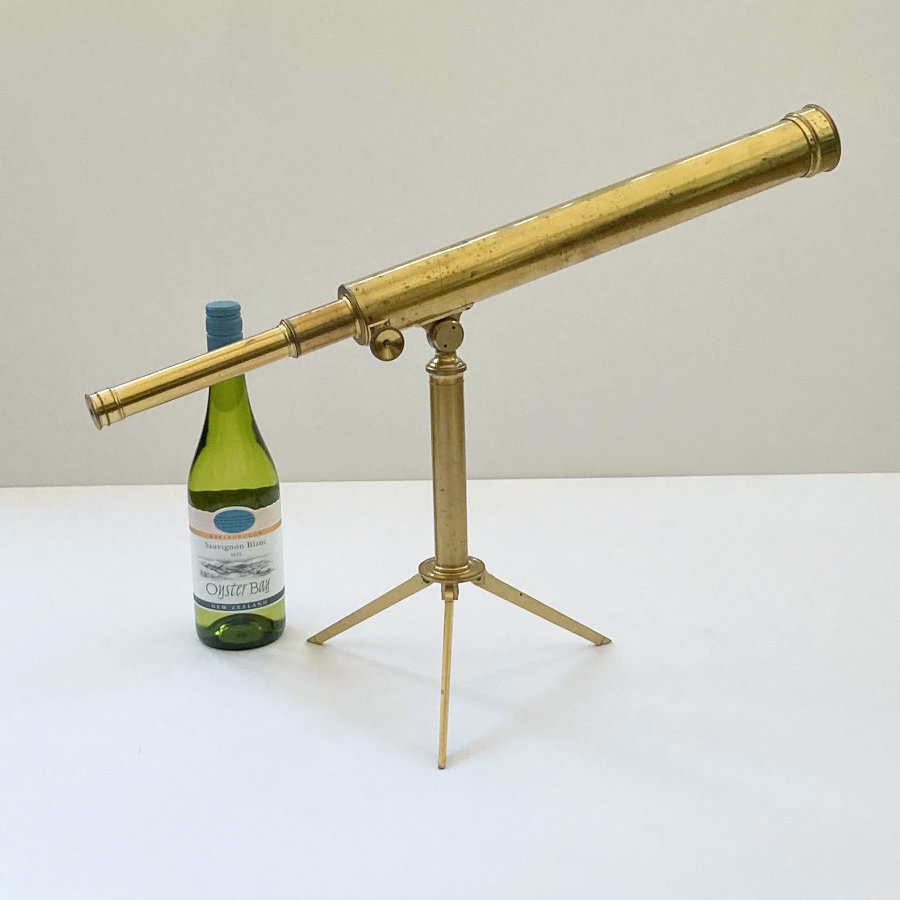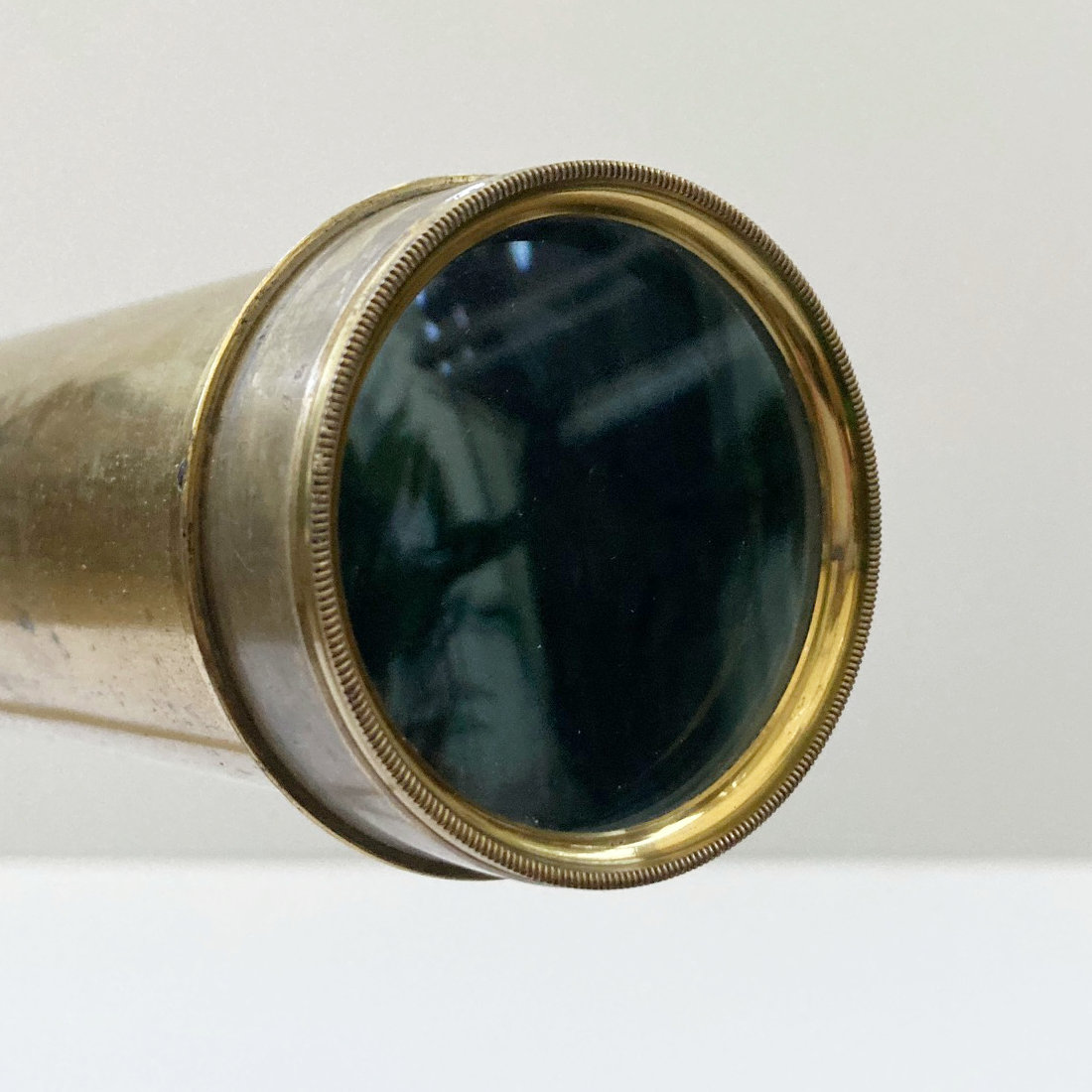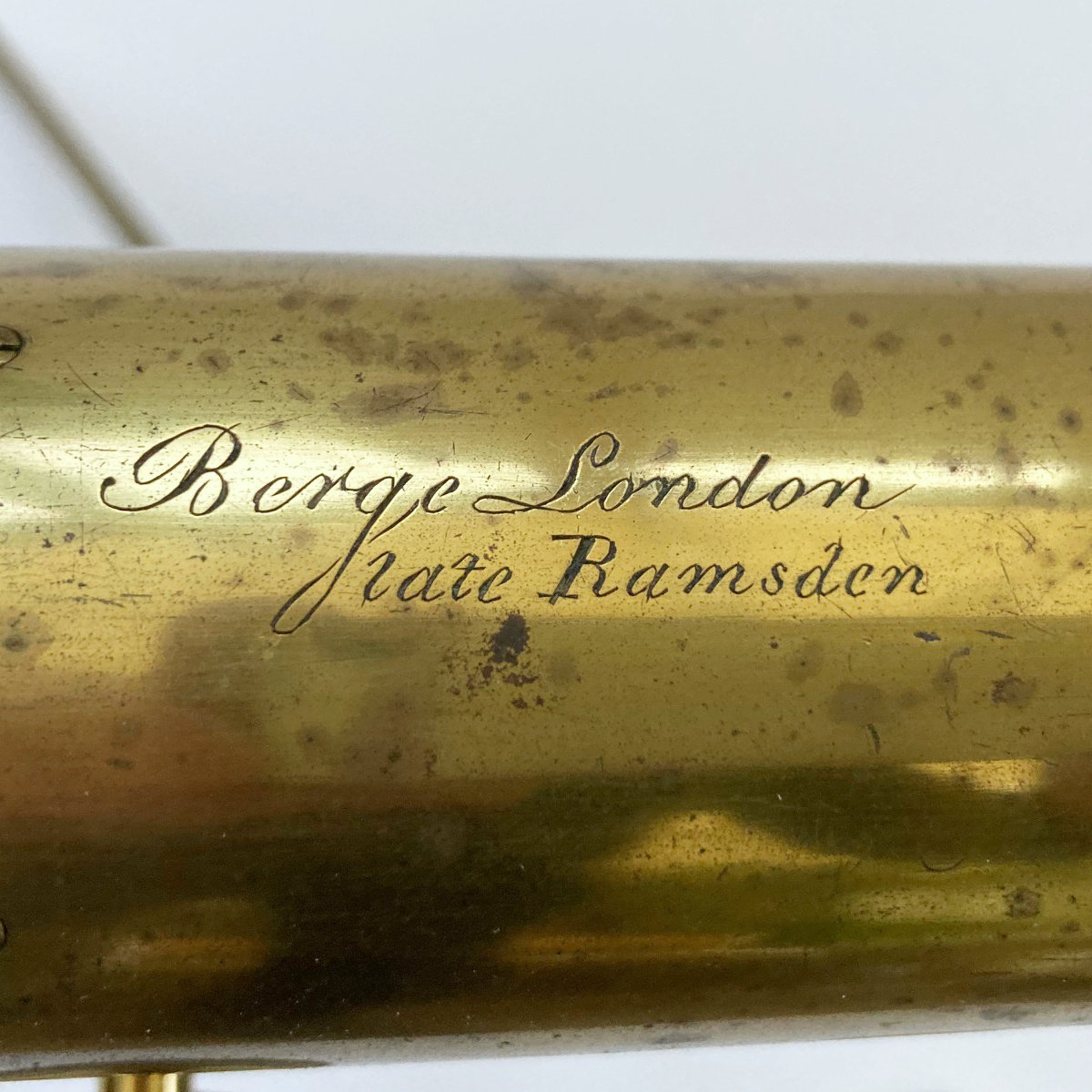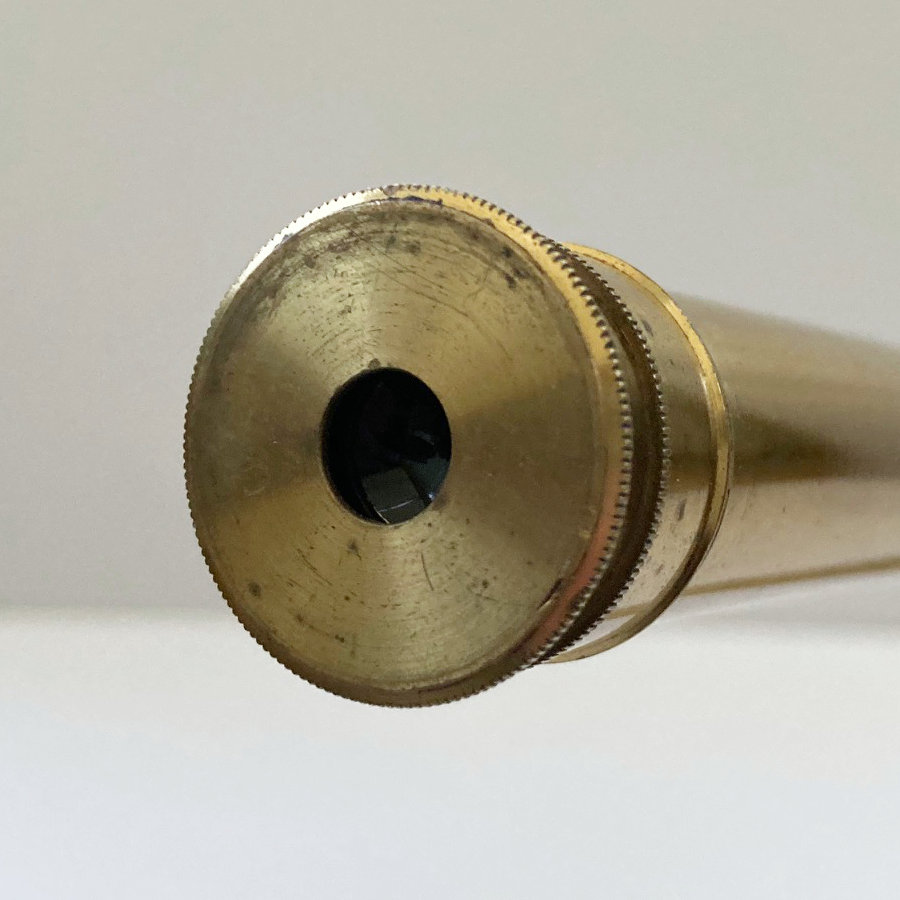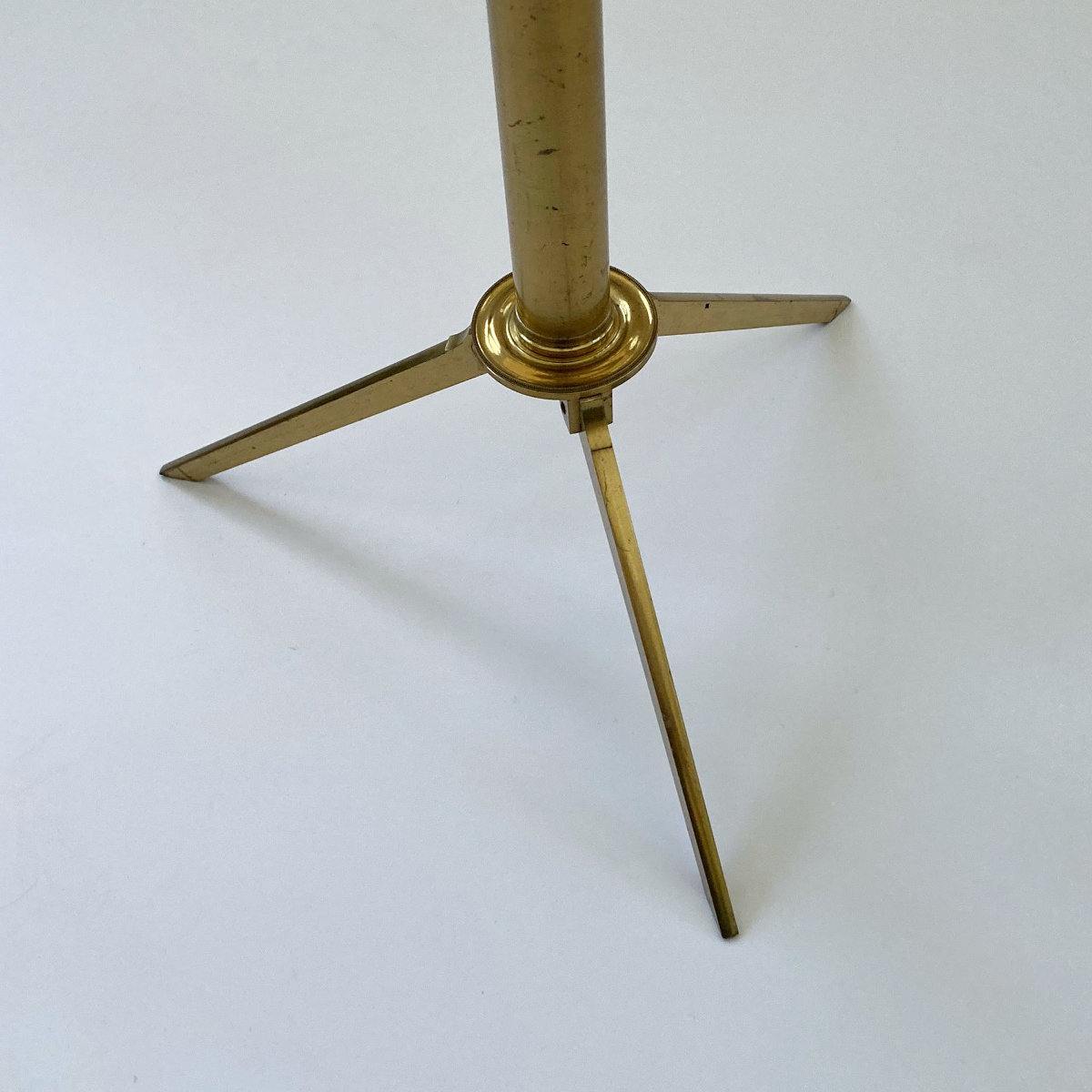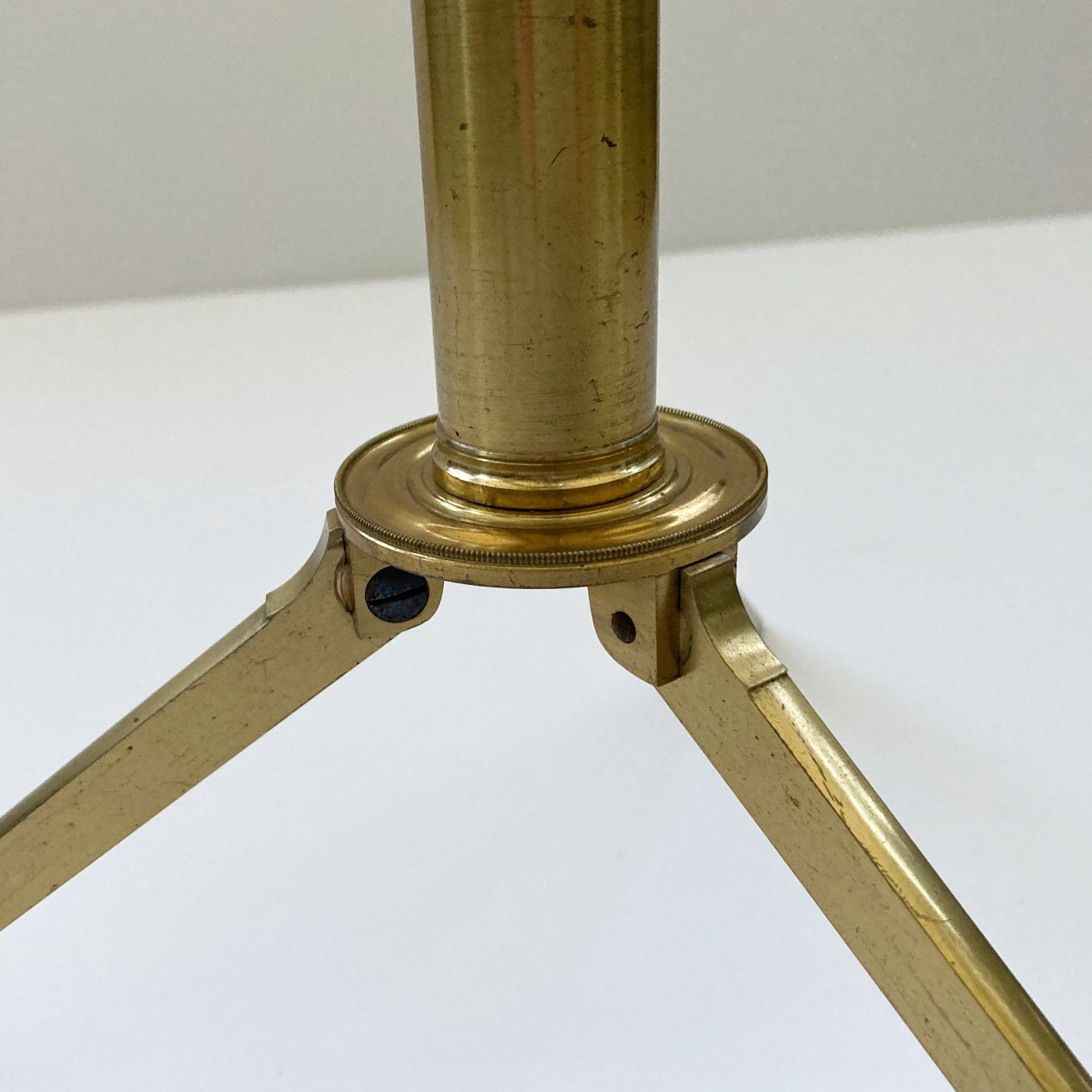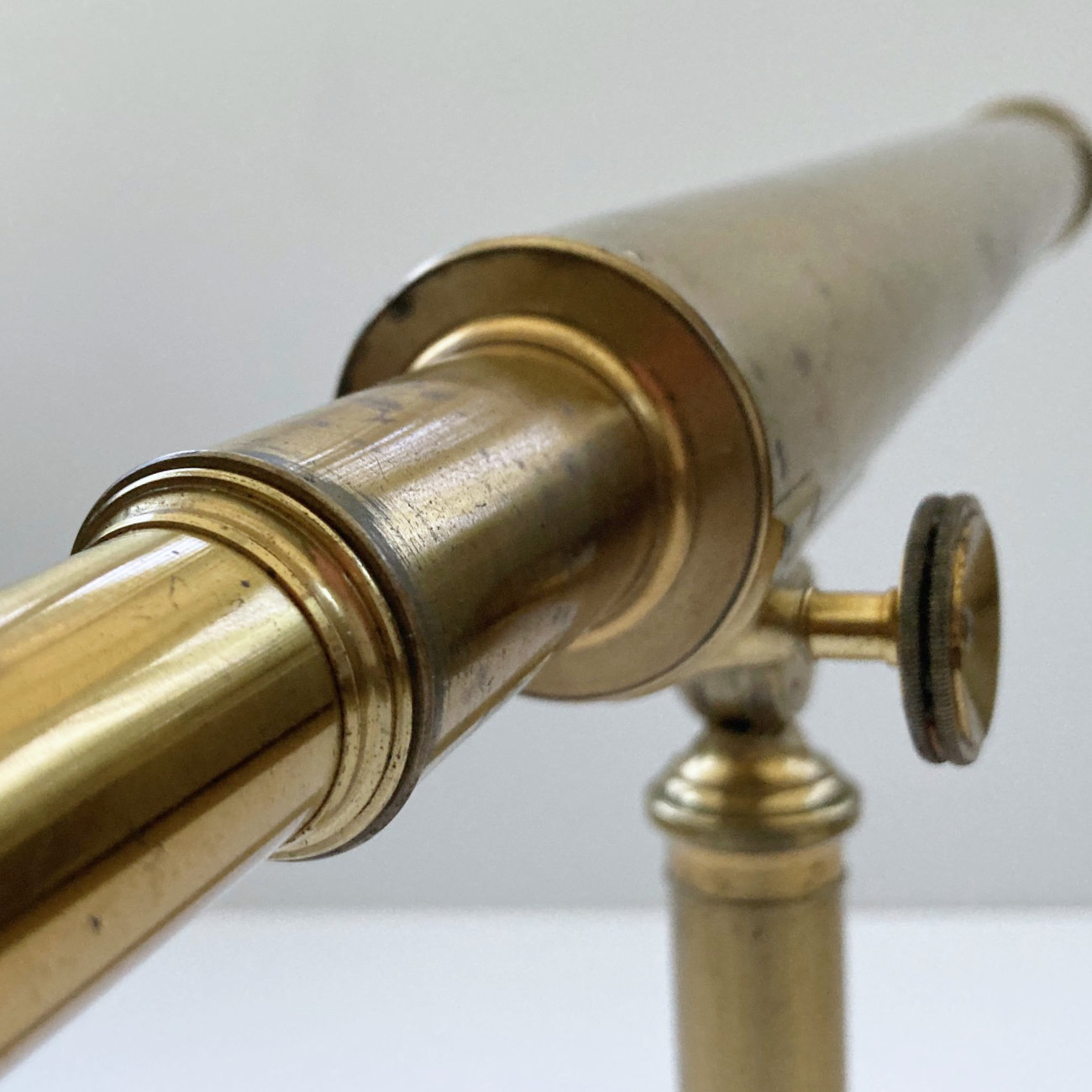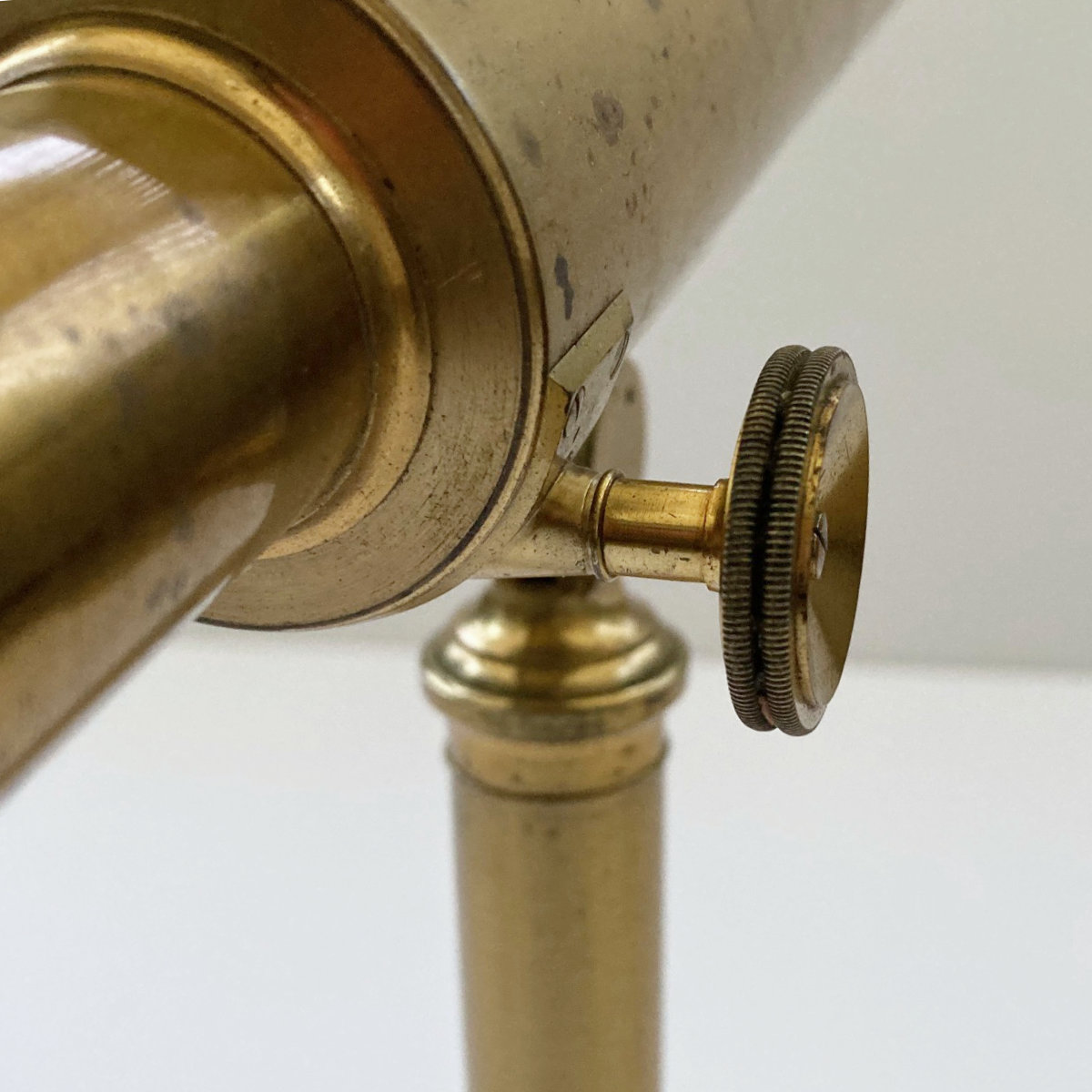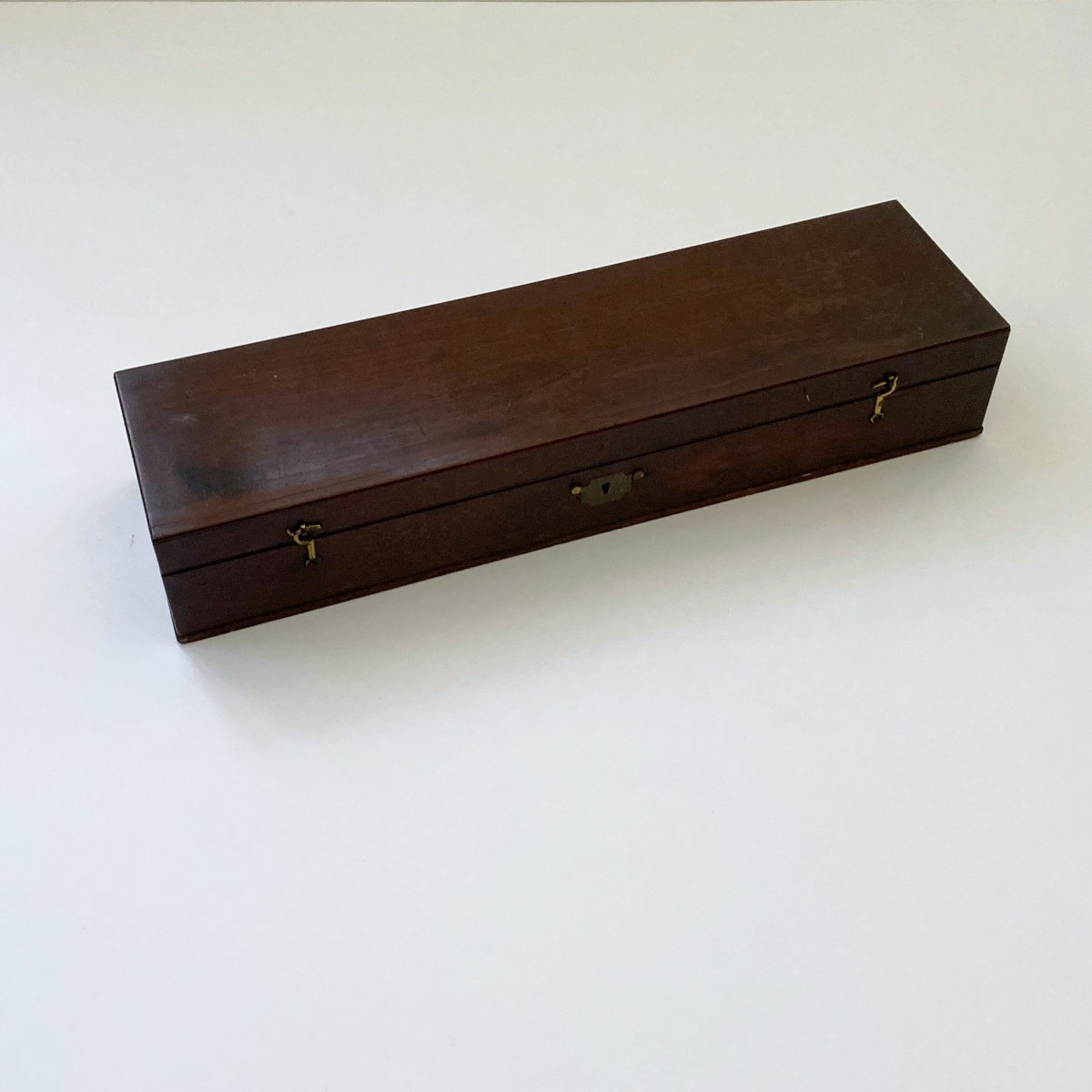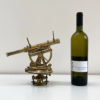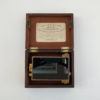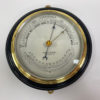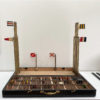Description
For sale, a rare Georgian mahogany cased library telescope of small proportions by Matthew Berge, London.
Comprised of a 17” main barrel and a 2” inch objective lens, this unusually small and powerful library telescope has a separate 6” eyetube which is fitted to the end and is focused by means of a knurled brass screw operating a short secondary barrel contained within the main body. The top of the main barrel is engraved, Berge London, Late Ramsden.
The tripod is screwed to the main barrel giving it a more permanent attachment than most examples, however, the tripod feet have the ability to unscrew from the base suggesting that it may also have been manufactured to allow for fitting to a larger and taller tripod for field use if required. It’s size and portability would certainly give weight to that theory.
This exquisite example comes complete with its original, fitted mahogany case and its additional sunshade eyepiece. The case measure just 50cms in length, 14cms in depth and 9cms in height.
Matthew Berge featured amongst the honoured list of Jesse Ramsden’s apprentices. Born in 1753 it is thought that he was apprenticed to Ramsden in 1767 whilst his older brother had been apprenticed to Peter Dollond a few years before.
Berge’s career decision to remain working with the hugely famous Ramsden as his foreman means that his story is forever overshadowed but there is no doubting the trust and appreciation for Berge’s skill that Ramsden maintained throughout his career. Berge was perhaps the only person that Ramsden confided his methods to for hand dividing circles and he was also entrusted to complete the work on the Shuckburgh equatorial at the Greenwich Observatory following Ramsden’s demise.
These glimpses of Berge shining through the writings about Ramsden’s life are perhaps small appreciation, but with no wife (and a son who had joined the East India Company), it was Berge that Ramsden chose in his will as the beneficiary for his premises at 199 Piccadilly.
His will states:
“I give and bequeath to my old servant Matthew Berge, the lease of my house and workshops No 199 Piccadilly next St James’s Church with my working tools and stock except those before mentioned on condition that he pays the remaining debts for building and repairing left at my death, and I do so constitute and appoint the said Matthew Berge together with the above named Edward Pritchard to be joint executors of this my last will and testament”.
Berge continued to trade from Ramsden’s workshop at 199 Piccadilly and most of his work from this period is engraved as “Berge Late Ramsden” probably as a means of maintaining the connection with his master’s fame and notoriety. The shop became 196 Piccadilly following the building of Regent Street and he continued there for the rest of his life. Records show that he worked with the famous civil engineer Thomas Telford and later replaced Dudley Adams as the provider to The Board of Ordnance. A sale of The Duke of York’s instrument collection was held at Berge’s premises in 1807 and military patronage was continued by the like of Arthur Wellesley Duke of Wellington who is known to have used Berge telescopes and barometers whilst on campaign in the Peninsular and at Waterloo. Examples of these instruments now form part of the National Army Museum’s collection.
Matthew Berge died in 1819 and Thomas Jones (another of Ramsden’s apprentices) is documented as sending a letter to the Board of Longitude requesting that the circular and straight line dividing engines originally manufactured by Ramsden and owned by the Board, be entrusted to him. Jones had applied in the same manner after Ramsden’s death but Berge had been granted stewardship of the instruments at this point and was probably the catalyst for Jones’s patenting his own dividing engine.
Circa 1810



